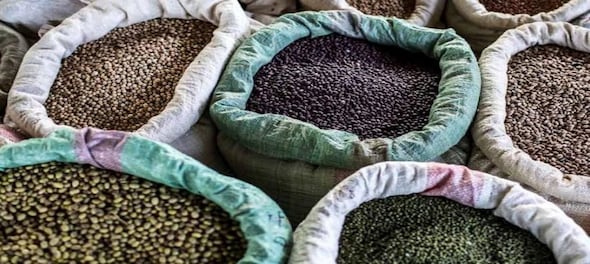
An abnormally dry August has adversely affected cereal and oilseed crops across Asia due to the intensified El Nino, and predictions of reduced rainfall in September are adding to the concerns of potential supply disruptions.
India's vital monsoon rains, crucial for nurturing summer crops like rice, sugarcane, soybeans, and corn, are anticipated to be at their lowest level in the past eight years. And with a share of 40 percent in worldwide rice exports, India has restricted its shipments, causing prices to surge to their highest point in 15 years.
In an interview with CNBC-TV18, Bimal Kothari, the President of the India Pulses and Grains Association (IPGA), said that the prospects for a strong kharif production seem dim this time.
The deficiency in rainfall has resulted in reduced cultivation across all three major pulses— tuvar or arhar (split pigeon pea), urad (white lentils), and moong (green gram)—leading to poorer yields. Consequently, upcoming times are likely to present challenges for the sector.
“From next month onwards, we will see a good arrival, September-October-November, about 5-6 lakh tonne of tuvar should arrive at the Indian market,” Kothari said.
August, typically recognised as the peak of the monsoon season, has brought unfavourable outcomes to numerous regions across the country. As of August 29th, the overall rainfall shortage for the entire country is recorded at 9 percent. Maharashtra, in particular, is grappling with an extensive deficit of 57 percent.
GP Sharma, President Metrology, Skymet told CNBC-TV18, "The Pan India rainfall deficit for August is 33 percent till August 29th. By August 31st, this figure can cross 35 percent. September beginning can bring a partial relief as a cyclonic circulation is being formed in the north-east Bay of Bengal."
Dr Sushma Nair, Scientist, IMD told CNBC-TV18, "The entire Maharashtra received a deficient rainfall in August. Marathwada and Central Maharashtra are the worst affected regions. Even Konkan belt which usually receives good rainfall, witnessed a deficit of 54 percent."
The deficient rainfall has affected crops, especially in the South Peninsula, Western India, and Central India. Crops like soybean, cotton, groundnuts, maize, coffee, pulses and other fruits and vegetables are impacted. On Thursday, IMD will share its rainfall outlook for September and from the farmers to the govt, everyone is pinning their hopes on September to make up for the current deficit.
(with input from Reuters)
First Published: Aug 30, 2023 5:45 PM IST
Check out our in-depth Market Coverage, Business News & get real-time Stock Market Updates on CNBC-TV18. Also, Watch our channels CNBC-TV18, CNBC Awaaz and CNBC Bajar Live on-the-go!


'Rahul Gandhi deserted Amethi due to fear of Smriti Irani': How BJP plans to puncture Congress' UP plan
May 3, 2024 1:12 PM
'Don't be scared, don't run away', PM Modi tells Rahul for not contesting from Amethi
May 3, 2024 1:06 PM

